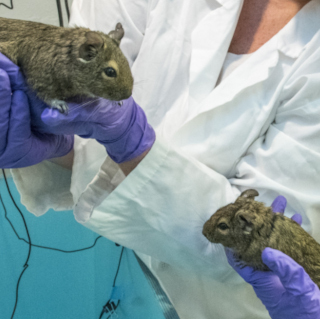Dead Bird Handling
Last Review Date: November 1, 2022
I. Purpose and Scope
The purpose of this Standard Operating Procedure (SOP) is to outline the procedures required for handling birds and disposing of birds found dead within the Field Research Station at Fort Missoula (FRSFM) aviaries or indoor housing rooms. The Attending Veterinarian must be notified and consulted regarding any birds found dead at the FRSFM.
II. Policy
It is LAR policy to meet or exceed all federal, state, and local regulations and guidelines and to comply with all institutional policies and procedures as they apply to the use of animals in research. Personnel must attend any applicable training in animal care and use, occupational health and safety, equipment operation, and SOPs prior to performing activities outlined in this SOP or work under the direct supervision of trained personnel.
III. Responsibility
It is the responsibility of the person discovering a dead bird in any of the housing areas, located within the FRSFM, to remove the carcass(es) from the housing area, alert and consult with the Attending Veterinarian regarding the deaths, and dispose of the carcass as directed by the AV (refrigeration prior to necropsy, freezing, or disposing of in the dumpster).
IV. Procedure
Dead birds are to be removed as soon after their death as possible, as carcasses are unsightly, can disturb remaining birds, and may become vectors for the transmission of infectious agents. When a dead bird is found:
1. Don a pair of nitrile gloves before removing a dead bird from the cage, room, or
aviary.
2. Place bird in an appropriately sized Ziploc bag available from the flight room storage
drawer.
3. Label the outside of the bag with the species of bird, date, and time found dead, PI,
and AUP number, as well as the mechanism of death (if known) using a black
permanent marker.
4. Contact the AV and the PI to determine whether or not to save the specimen for
necropsy or future dissection.
5. If an infectious and transmissible disease process is suspected and the AV or PI wishes
to have a necropsy performed the bird must be kept refrigerated (NOT FROZEN).
a. Place the original Ziploc into another Ziploc bag and place inside the refrigerator in
room QS 108A. Label the outer bag with the words "FOR NECROPSY". Also, include
any individual identification information and notify the Lab Manager and PI of the
situation.
6. If the AV has determined that a necropsy is not essential, and the bird is to be
preserved for future dissection or has been an active study subject, the bird should be
placed into the specimen freezer in QS111.
7. If the AV and the PI has cleared the bird for disposal, then the bird may be placed into
a black garbage bag and disposed of in the outside garbage container.
